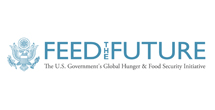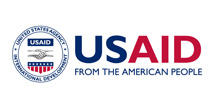Dietary diversity in South Gondar
Project title: Dietary Diversity and Associated Factors among Rural Households in South Gondar Zone, Northwest Ethiopia
Lead researcher: Girma Nega, Bahir Dar University
Collaborators
- Melkie Endris, University of Gondar
- Degnet Teferi, Bahir Dar University
- Amanuel Nana, Bahir Dar University
- Rigbe W/Michael, Bahir Dar University
Research report – download the research report girma-nega-et-al-dietary-diversity
Research summary
Dietary diversity refers to increasing the consumption of a variety of foods across and within the food groups. A lack of dietary diversity is a severe problem among poor populations in the developing world. There is substantial evidence that dietary diversity is extremely low among Ethiopian rural households, especially for children. However, there is little empirical evidence on factors contributing to low dietary diversity among rural households. The aim of this study is therefore to assess dietary diversity and determinant factors among rural households.
A community-based cross-sectional study was conducted. Eight hundred sixteen rural households were randomly selected to be involved in the study. The study questionnaire was pre-tested using 5% of the selected household heads, all of whom were responsible for family food preparation. Data were entered and cleaned in Epi Info software, then transferred and analyzed using SPSS version 20 software. Descriptive statistics, frequency, proportions, and charts were used to explore the data. Logistic regression was used at 95% CI, and odds ratios were presented to identify associated factors and to assess the strength of the association. For all statistical significance tests, the cut-off value was p≤0.05.
Of the total study participants, only 16.2% had high dietary diversity, which meant seven or more food groups in their diets during the preceding 24 hours. About 83.8% of participants had inadequate household dietary diversity. Participation in food exchange at the market was found to be positively associated with dietary diversity. Respondents who exchanged foods were 2.2 times more likely (95% CI: 1.074, 3.84, 4.561) to have good dietary diversity than those who did not. There was also significant association between variables such as having a radio, mobile phone, bank account, and small animals such as hens.
Household dietary diversity was low in the study area. Having a mobile phone, radio, bank account/ saving, small animals, and participating in exchange of foods at market were found to be major determinants of household dietary diversity. Nutrition education through local media, promotion of bank accounts for savings, participation in food exchange, and rearing of small animals should be encouraged as major interventions that can improve household dietary diversity.


